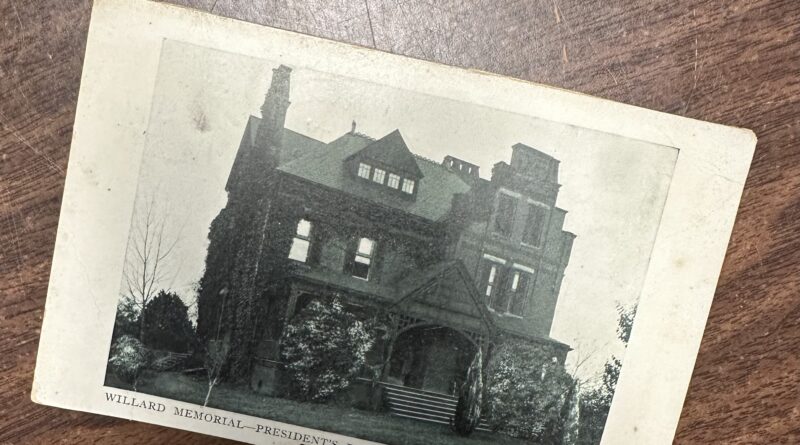A glimpse into the history of Willard Memorial
Over one hundred years ago, a structure full of historical integrity was built on the campus of Maryville College. This house is called Willard Memorial, and its rich history is home to many, many different eras.
Still standing (in great shape, might I add) in the northeast corner of campus, lives a building that is currently serving no purpose other than being a strikingly beautiful building for the campus community to pass by every day.
Little do these passerbyers know that there is a rich historical significance of this Queen Anne style house, and in the near future, its purpose might be more than just being a visual aid. Amy Lundell, head of Archives at Maryville College, provided bounds of useful history on the old building.
Willard Memorial began construction in 1890 and finished in 1891. Sylvester Willard, a friend and donor of the college, inspired the name. After Willard passed, his wife and two daughters donated money to the college for the house.
Upon initial construction, the plan for the building was to serve as the president’s home, and for a while, that is exactly what it was used for. The very first Maryville College president, Isaac Anderson, through the fifth, Samuel Tyndale Wilson, lived in the home.
When Wilson lived in the house, it was primarily used as his extra home if he needed a place to stay overnight during busy times of the year. Wilson’s use of the home was the last time Willard Memorial was occupied by a college president.
In 1951, Susan Wylee Walker, who was the sister-in-law of the Maryville College chaplain at the time, had the idea of a better place for college presidents to live. Thus, RT Lodge was built on Maryville College’s campus.
In the years following, Willard was home to various people, including the Maryville City mayor, professors and students holding experiments for “off-grid living,” and influenza patients during the Spanish flu epidemic.
In 1979, Willard Memorial closed and the college began fundraising for its renovations. There was ample money raised from grants, due to its place on the national registry of historic places, as well as from alumni donations. Once there was enough money raised, the renovations began in 1983.
After the renovations had been completed, Willard was home to Alumni and Advancement Affairs, but it wasn’t long before renovations were needed again. Lundell explained just how many key pieces were missing in the memorial post-renovation.
“Yes, we had had this 1980s renovation, but there’s parts to Willard that didn’t get renovated in this. For example, accessibility is pretty basic – it’s a ramp through the back door, there’s no elevators inside, and there’s issues with electrical and plumbing more than the basic stuff that they did in the 80s.”
So, shortly after the first renovation, the college acted upon an agreement they had made years prior involving what is now Greaser Alumni Center, which had been opened as a bank on college property in 2006, and recently became vacant after merging with another bank.
“When the bank moved out of that, the agreement for that building to be built there, on college property, was that the building would revert to the college when the bank would leave, and so that created a good opportunity for us to have a modern building for us to move our alumni center to.”
Now, Willard Memorial is empty and awaiting renovations, which have not yet started. Lundell explained that the board members who decide what happens with the building are still in the planning stages of deciding what is to come. Suzy Booker, who used to have an office in the house and Vice President of Institutional Advancement, emphasized the same.
“I don’t think a final decision has been made about the future of Willard House.”
Wherever the future takes Willard Memorial, one thing is for sure: it will remain a beautiful, historically rich staple to the landscape of Maryville College.

